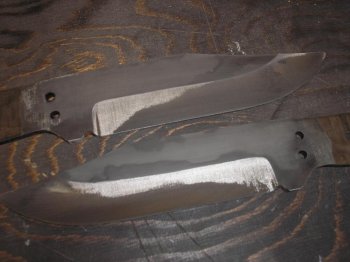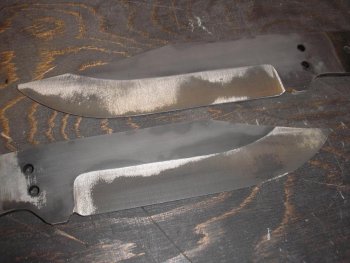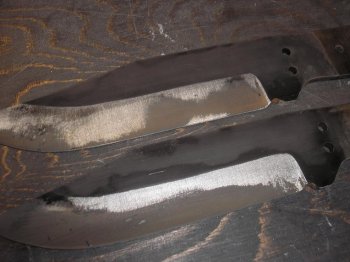Frank Hunter
Well-Known Member
I'm putting together a couple of hunting knives that I'm going for a darker color theme with, ferric chloride treatment on the blades to a dark grey and probably a cold blue for the bolsters. The steel is 1095 from Admiral, 1500 degree austenitizing temp with a 5 minute hold, 130 degree canola oil for the quench. Tempered twice so far at 375 for two hours each. This steel required an annealing cycle before I could drill it. The ferric chloride etch is turning out awfully blotchy on the flats of the blades with my 600 grit hand finish, and I can see with magnification that there are herringbone pattern like borders to the blotches. I'm guessing my heat treatment is to blame but I'm trying to figure out just where I went wrong.



